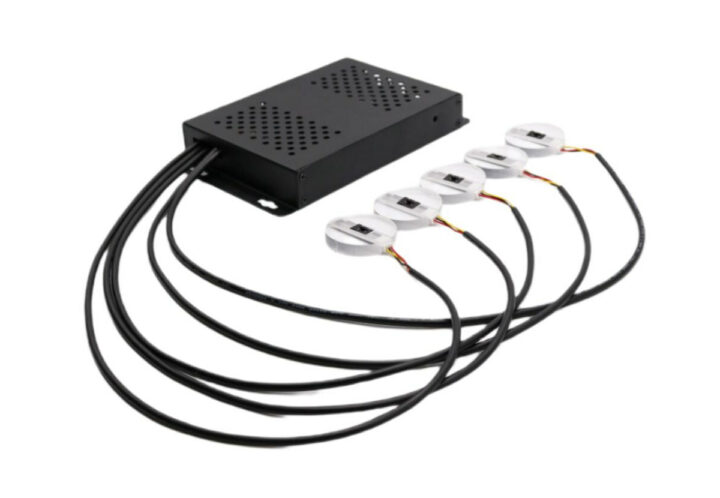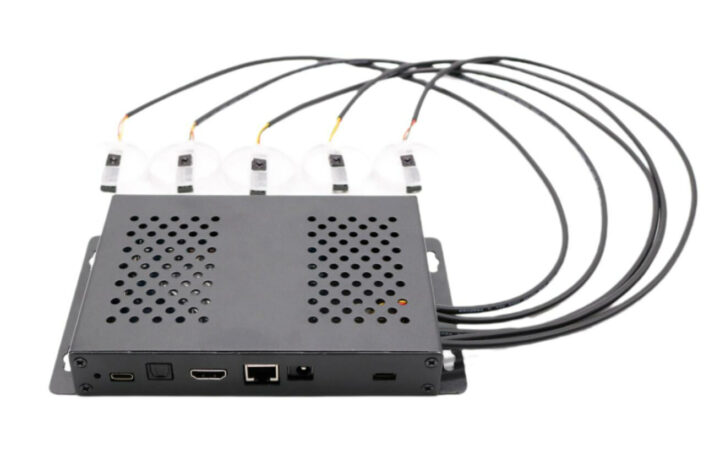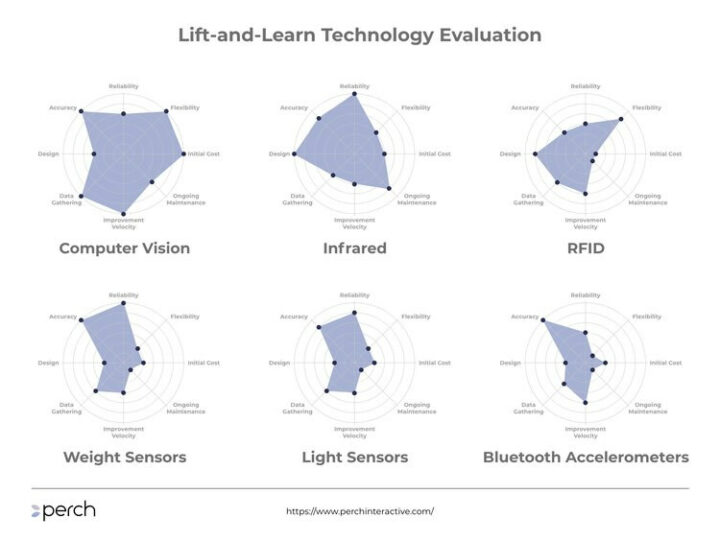Light sensors are used to turn on/off lights, adjust the brightness of displays, and more. But I’ve come across a use case I never thought of: object presence detection. In the digital signage work, such features if called “lift and learn”, and light sensors are used to detect when an object is present and play a video or display information about the product.
That concept came to my attention when I saw a photo of Mekotronics R29 digital signage player with several cables coming out of the device and attached to what looked like white hockey pucks and turned out to be light sensors.
 Apart from the light sensors, Mekotronics R29 specifications are pretty standard:
Apart from the light sensors, Mekotronics R29 specifications are pretty standard:
- SoC – Rockchip RK3399 hexa-core processor with 2x Cortex-A72 cores, 4x Cortex-A53 cores, Arm Mali-T860MP4 GPU, 4K VP9, H.264, H.265, and 1080p60 VC-1, MPEG-1/2/4, VP6/8 video decoder
- System Memory – 4GB DDR
- Storage – 64GB eMMC flash, MicroSD card slot
- Video Output
- HDMI 2.0a port up to 4Kp60 with HDR10 and HLG modes support
- USB Type-C port with DisplayPort Alt. mode
- Dual independent display support
- Audio – Optical S/PDIF, digital audio via HDMI
- Networking
- Gigabit Ethernet RJ45 port
- Dual-band 802.11b/g/n/ac WiFi 5 and Bluetooth 4.1
- USB – 1x USB Type-C USB 3.1 Gen1 port, 1x USB Type-A USB 3.1 Gen1 port, 1x USB 2.0 port
- Misc – Up to 10 light sensors for lift and learn function
We’re told Mekotronics R29 can run Android or Linux OS without further details. I’d assume the light sensors are connected to some I2C headers on the main board.
The best way to understand how “lift and learn” work is to watch the short video below. Basically, a default video plays when all objects are in their place, and the digital signage player switches to a specific video once a product is lifted.
I suppose it might be used for other applications notably inventory management and safety. Light sensors are not the only solution for “lift and learn” with computer vision, infrared sensors, RFID tags, weight sensors, and Bluetooth-connected accelerometers, each option with its own set of PROS and CONS as shown below in an illustration from Perch Interactive.
Initial costs for light sensors are fairly low, but installation and maintenance may be problematic due to cleaning, obstruction, and complexity of wiring, especially in larger installations. Computer vision is the most flexible solution and can provide plenty of data, but obviously, the cameras must not be obstructed and be placed strategically…
Mekotronics R29 sells for $126 per unit (not sure with sensors or not) in quantities of 100 pieces or more. Most other lift and learn solutions I’ve found appear to be complete retail solutions with a player, a display, cables with sensor or RFID tag, and a stand available as yearly rentals from companies like Click Grafix or Nexmosphere among others.

Jean-Luc started CNX Software in 2010 as a part-time endeavor, before quitting his job as a software engineering manager, and starting to write daily news, and reviews full time later in 2011.
Support CNX Software! Donate via cryptocurrencies, become a Patron on Patreon, or purchase goods on Amazon or Aliexpress







